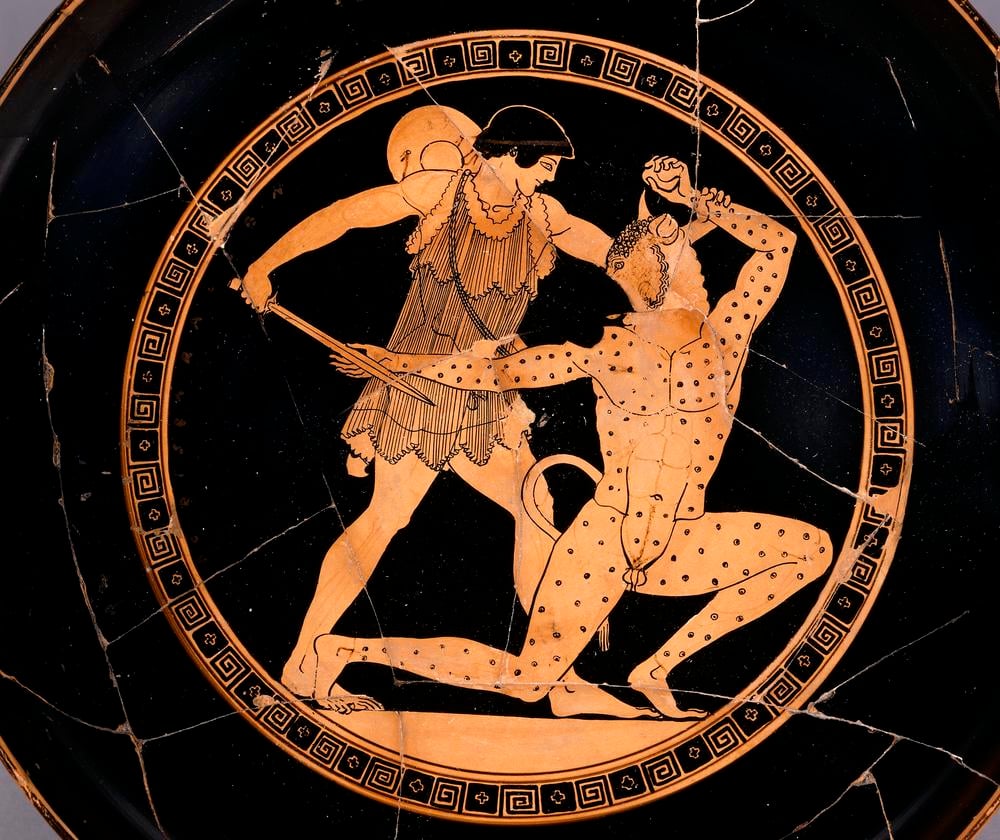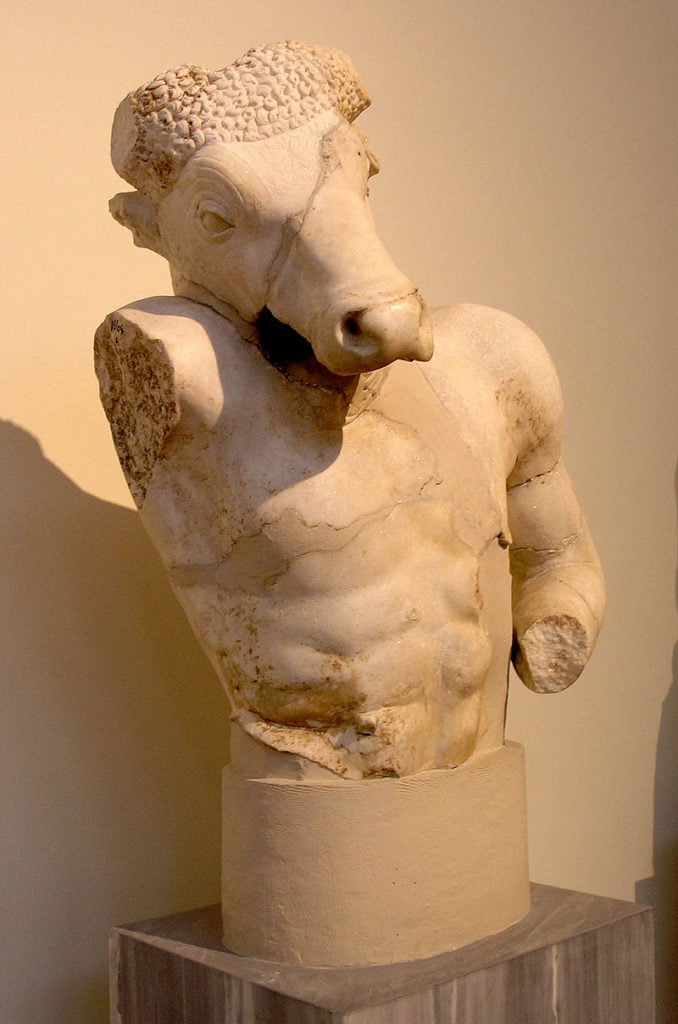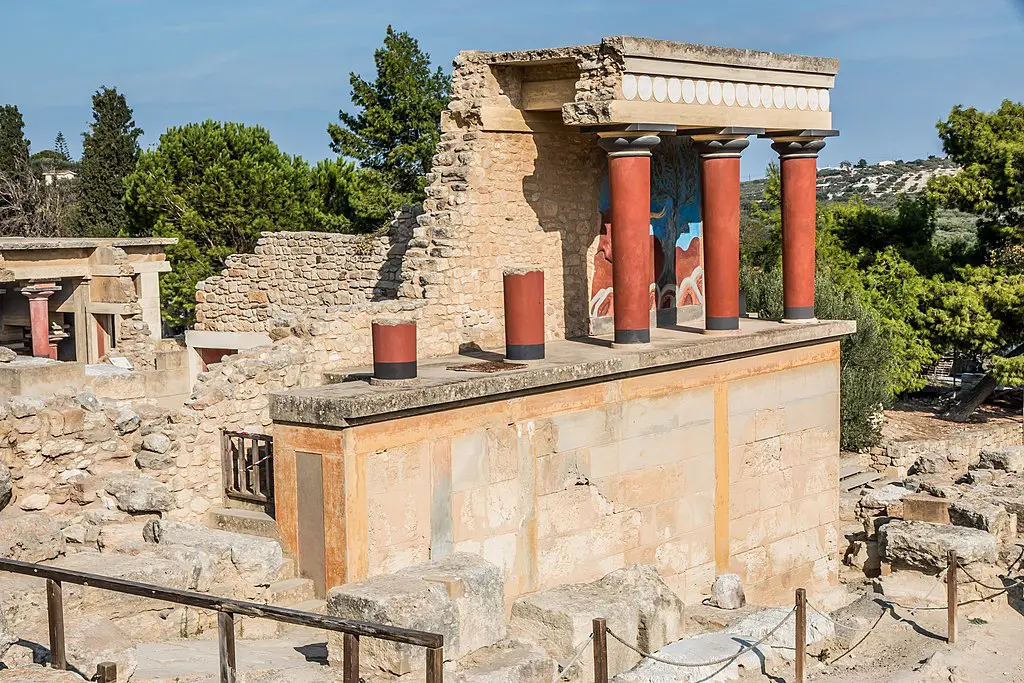
The myth of Theseus and the Minotaur is one of the most tragic and fascinating myths in Greek mythology.
Until British archaeologist Sir Arthur Evans unearthed the palace of Knossos, the story of the half-man, half bull killed by Theseus inside a labyrinth was considered a popular myth. However, archaeology changed has changed this.
Theseus, a genuine Greek hero and Minotaur, a terrifying monster, are the main protagonists of a myth that involves gods and monsters, heroes and kings and two of the main city–states of the Hellenic world, namely Athens and Crete.
The birth of Minotaur and the Labyrinth of Crete
King Minos of Crete fought his brother hard to ascend to the throne. Having won the kingship and exiled his brother, Minos prayed to Poseidon, the god of the sea, for a snow white bull as a sign of the god’s approval. Minos was supposed to sacrifice the bull when it appeared, but it was so beautiful that he kept it instead.
Poseidon, angered at Minos’ ingratitude and selfishness, caused Minos’ wife, Pasiphae, to fall in love with the bull so deeply that she mated with the animal. Their offspring was a male with the head and tail of a bull, a devastating half-man, half animal creature.

The Minotaur was at first cared for by Pasiphae, but, as it grew older, it became violent and Minos had the architect Daedalus design an intricate labyrinth inside the palace in which the creature was kept.
According to Diodorus Siculus, Aegeus killed Androgeus out of fear that the latter would support the sons of Pallas against him. In yet another version, Androgeus was killed in a battle between the Athenians and the Cretans.
According to the myth, the city of Athens was held accountable for the death of Androgeus. It had to pay a tribute to the King of Crete of seven of the best and most noble youths and seven of the finest and most virtuous maidens each year—though according to other versions, it was every nine years. They would be sent to Crete cast into the labyrinth within the Palace of Minos and be eaten by the Minotaur.
The third year, Theseus, son of Aegeus and King of Athens, volunteered to be one of the seven young men that would go to Crete in order to kill the Minotaur and end human sacrifices to the monster.
Theseus promised his father that he would cast white sails upon his return from Crete, allowing him to be informed that he was still alive in advance. On the other hand, the boat would cast black sails if Theseus had been killed.
Theseus slays the Minotaur
Theseus announced to King Minos that he was planning on killing the Monster, but Minos knew that even if he did manage to kill the Minotaur, Theseus would never be able to exit the Labyrinth.
However, Theseus met Princess Ariadne, daughter of King Minos, who fell in love with him and decided to help Theseus. She gave him a thread and told him to unravel it as he went farther and farther into the Labyrinth, so that he would find his way out upon killing the monster.
Aegean Sea Named After King Aegeus
Theseus succeeded in slaying the monster, escaped the labyrinth, and fled with Ariadne back toward Athens, abandoning Ariadne on the island of Naxos. In a version of the myth, she was rescued by and married the god Dionysus.
The Greek hero was supposed to change the black sails of the ship to white so that his father King Aegeus would know his son was still alive and had conquered the Minotaur. However, having forgotten, his father who was waiting at Cape Sounion, hurled himself off a cliff into the sea in grief upon seeing the ship returning with black sails. Consequently, he drowned. Hence, the sea became known as the Aegean after King Aegeus.
More than just a myth?

The Palace of King Minos, Knossos, was discovered by Sir Arthur Evans in 1894, and excavations began immediately at the site in March 1900. Knossos is the largest Bronze Age archaeological site on Crete, probably the ceremonial and political center of Minoan civilization and culture. Evans gave the name “Minoan” to the culture he discovered at Knossos, named so after King Minos.
Whether Minos was the name of an individual king or a title, we do not know but Herodotus mentions Minos in his Histories. “Minos of Cnossus” is referenced as ruler of the sea while Herodotus mentions a detail found in the myth of the Minotaur, namely that “Sarpedon and Minos [of Crete] fought for the throne and the victorious Minos expelled Sarpedon.”
Having read both the myth and the mentions of Minos, Evans, upon finding murals of bull- jumping in the palace, posited that perhaps Knossos was the labyrinth from the story of Theseus and the Minotaur.
According to archeologist Anna Michailidou: “Behind the pre-Hellenic word labyrinthos— which is etymologically allied to the word labrys (double axe)—is perhaps the very palace of Knossos, the ruins of which reveal the labyrinthine complexity of its structure.”
Michailidou adds that “it is amazing how long one can spend wandering in and out of these rooms, going up and down stairs and, frequently, much to one’s surprise, finding oneself back in the same room having come by a different route.”
In addition, the Double Axe symbol was the sign of the Minoan goddess and was found abundantly throughout Knossos, especially in the Hall of the Double Axe.
Greek Mythology as an explanation of extreme natural phenomena
Numerous academic scholars have drawn parallels between natural phenomena and the creation of myths. In attempts to make sense of the world, our early ancestors often gave physical form to unknown and terrifying natural phenomena in attempt to rationalize these.
Various retellings of the myth do agree that the beast lives underground in the labyrinth and that when it bellows, the earth shakes. Scientific research into seismic activity revealed that Crete is on a subduction zone, which is a tectonic plate boundary where two plates converge causing significant and consistent earthquakes.
Whether it’s depicted in the Palace of Knossos or it is used to explain seismic activities on Crete, the certain thing is that as archaeological research evolves, the story of Theseus and the Minotaur proves to be more than just an Ancient Greek myth.
See all the latest news from Greece and the world at Greekreporter.com. Contact our newsroom to report an update or send your story, photos and videos. Follow GR on Google News and subscribe here to our daily email!



